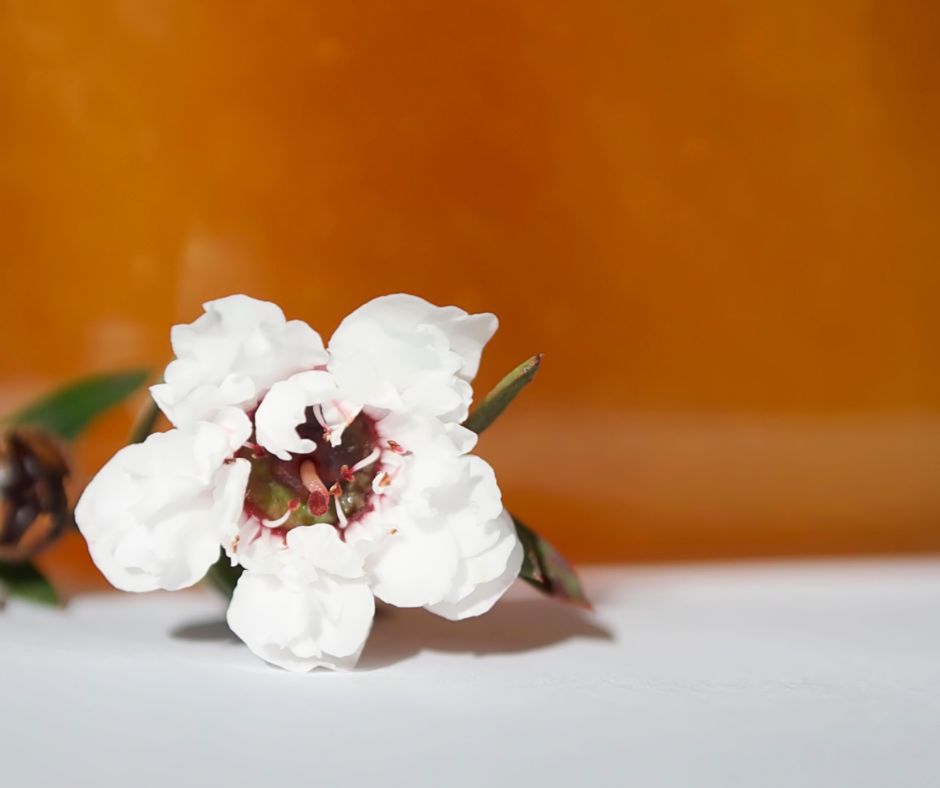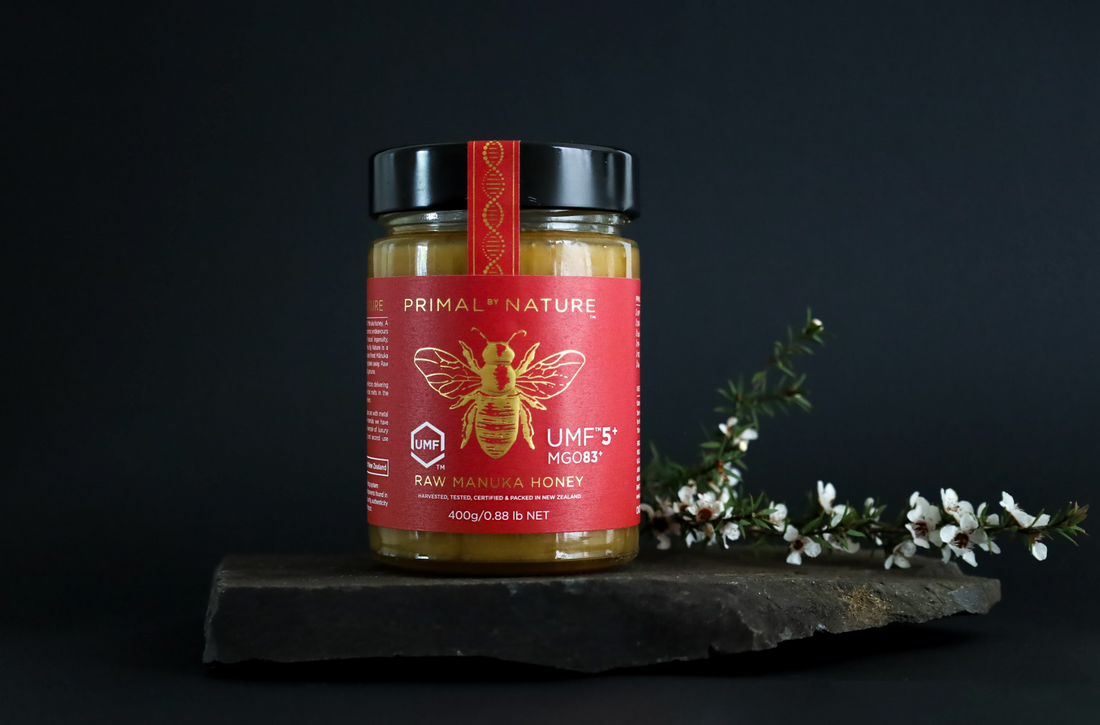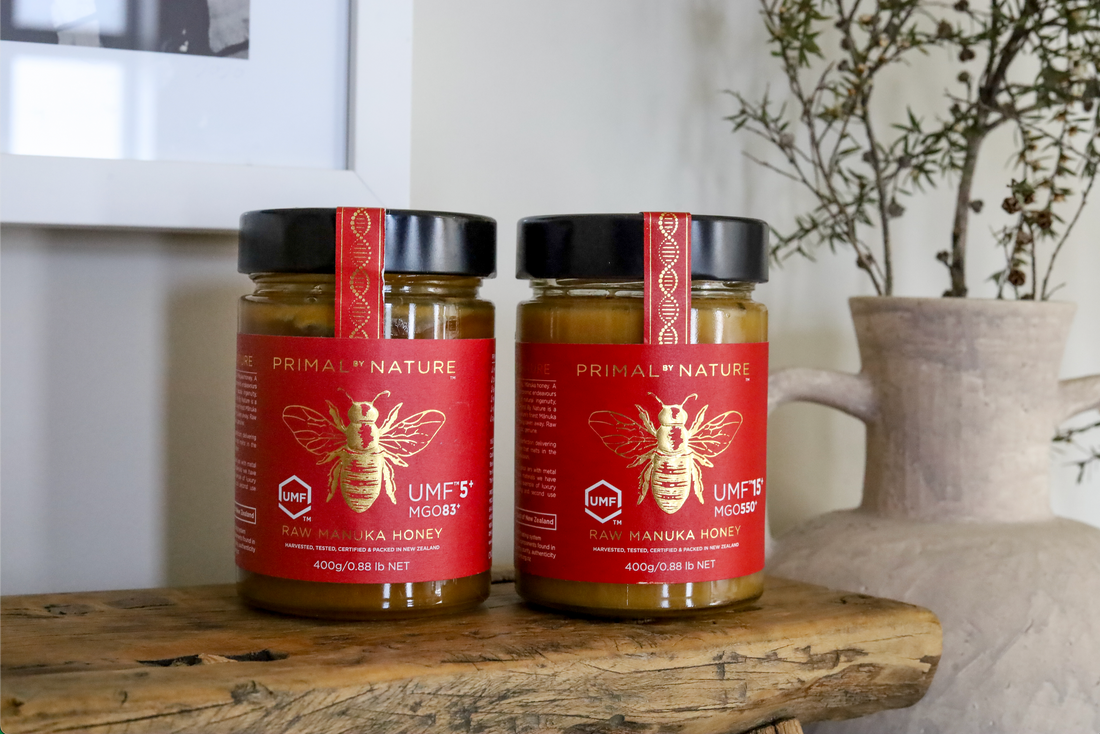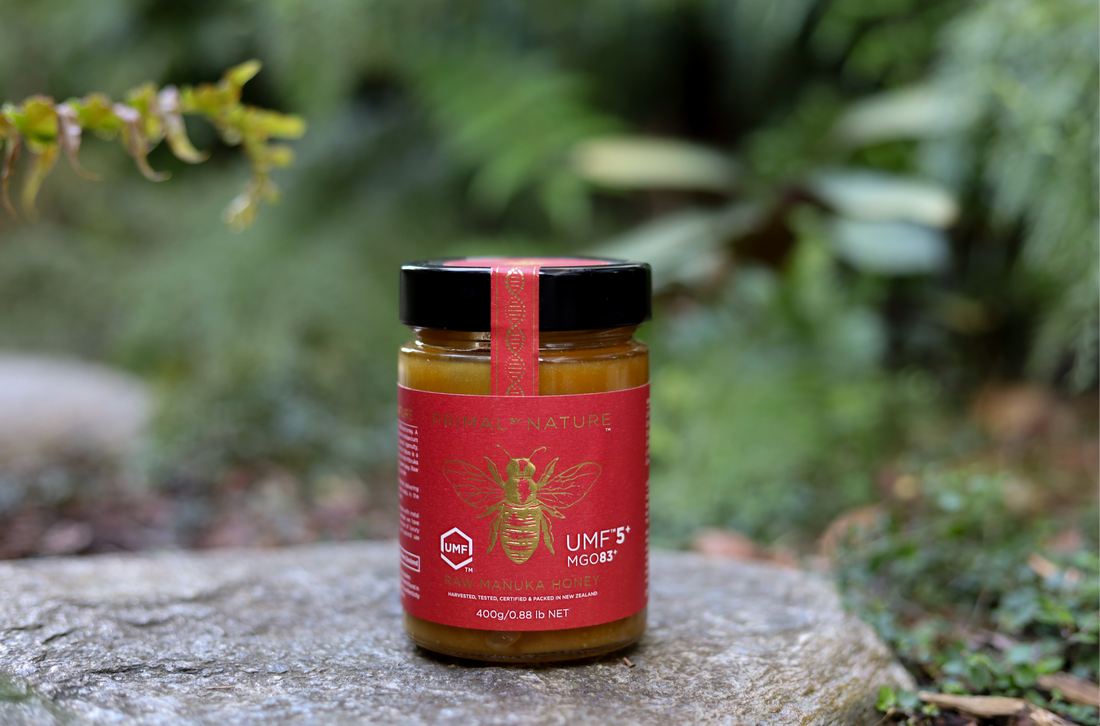Garnering a reputation worldwide for its caramel-like texture and exquisite taste, even people who haven’t tried pure, raw Mānuka honey are well-aware of its importance. Few items on Earth can provide us with both a natural energy boost and a splendid taste. Many specific compounds within genuine Mānuka honey are not seen in other varieties.
Although extensive scientific research and writing have gone into discovering more about pure Mānuka honey, this blog is going to give an overview of all of the vital information. Throughout this article, you’ll understand why and how New Zealand’s rarest honey has become one of the most sought-after varieties in the world.
Raw Mānuka Honey - What Is It?
In its essence, raw Mānuka honey is precisely that. The honey that would arrive on your doorstep is the same honey that exists in the hive. Untouched, pure and primal - Primal by Nature prides itself on a brand that delivers customers a drop of natural gold. All our jarred honey is brought to you directly from the source and has not been adulterated with additives, preservatives or artificial compounds.
Ensuring our customers get the best quality Mānuka honey requires a smooth and well-rounded operation. Therefore, we keep our honey as untouched as possible to retain the beneficial nutrients, sugars and bioactive ingredients. Arriving to the hive from the very rare Mānuka flower, our pure Mānuka honey is certified to be halal, kosher, glyphosate residue-free, gluten-free, non-GMO and unpasteurised.
You won’t need to second guess a purchase from Primal by Nature as we have done all of the hard work. When buying a jar of our delicious and unmatched honey, expect nothing less than 100% pure New Zealand Mānuka honey.
What Makes Raw Mānuka Honey More Valuable Than Conventional?
There are several factors that contribute to Mānuka honey’s value and rarity. Firstly, the nectar of the Mānuka flower is highly rare and only blooms in a narrow window of approximately six weeks per year. Harvesting this nectar requires highly skilled apiarists or beekeepers to maintain a robust level of supply.
Many multifloral varieties of Mānuka honey exist and are available, but the monofloral variety is far more valuable as it solely contains nectar of the Mānuka flower. Read our blog on monofloral versus multifloral Mānuka honey for more information on the difference between the two.
Some of the locations where Primal by Nature access Mānuka bushes are only accessible via helicopter and occupy some of the most remote regions in the country. Furthermore, it’s well documented that the Mānuka flower is highly sensitive to climate changes and require a very stable environment. As a result, apiarists have concluded that Mānuka flowers are best situated away from populated areas.
Additionally, on a chemical level, Mānuka honey separates itself greatly from conventional honey. More often than not referred to as the gold standard of Mānuka honey certification, UMF™ is the key to understanding pure Mānuka honey.
UMF™ encompasses the four key bioactive ingredients of Mānuka honey which each serves a role in identifying and authenticating. Although some of these biochemicals are found in trace amounts, they are found in far higher levels within Mānuka honey.
- Leptosperin - DNA marker
- Methylglyoxal (MGO) - potential antibiotic properties
- Dihydroxyacetone (DHA) - natural precursor to MGO
- Hidroxymethylfurfural (HMF) - heat-sensitive chemical for freshness
For more information on UMF™, please read - Why Is UMF™ Manuka Honey So Popular?
Is There A Way I Can Ensure Genuine Mānuka Honey?
There are a few things you should look out for when purchasing your Mānuka honey. Firstly, your product must originate from New Zealand. Established brands like Primal by Nature will showcase a NZ Made sticker on the side of the jar alongside a serial number. This is government-back seal that ensures customers that this product is in fact Kiwi made.
Secondly, pure Mānuka honey brands will typically show the MGO concentration on the jar. Many buyers are comfortable buying their jars with MGO only to certify the honey. However, while the honey may be of a high quality, it has’nt been totally verified like UMF™-certified Mānuka honey.
To ensure you have every box checked for your genuine Mānuka honey, a UMF™ validation will ensure the stress is taken out of your hands. Part of the UMF™ certification process requires extensive testing to ensure single-origin and minimum concentrations of the bioactive ingredients.
Primal by Nature - Sustainably Providing 100% Pure New Zealand Mānuka Honey
Primal by Nature can deliver Mānuka honey from the rawest and primal regions in some of the most remote New Zealand locations. We are your one-stop shop for a sustainable and natural solution. Our Mānuka honey comes in a range of UMF™ strengths.
All Primal by Nature Mānuka honey arrives at your door in recyclable glass jars regardless of the level of MGO or UMF™. We believe that our pure New Zealand Mānuka honey must be the best and should be available to consumers in the same eco-friendly packaging.
Primal by Nature eliminates the confusion surrounding Mānuka honey UMF™ grading systems and standards. As a result, you will be made aware of the different grades and be confident in buying a product that reflects an environmentally conscious brand.
Taking Mānuka honey to the next level, every Primal by Nature glass jar contains a potent primal burst of nature. To taste Mānuka honey of this stature is to embrace nature itself. So take a look at our extensive selection of Mānuka honey products and become one with nature.





